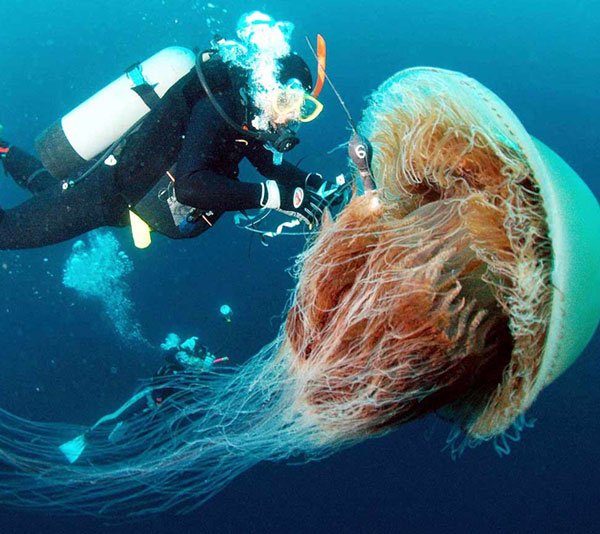Real damage of the jellyfish threat
No data or analysis results support the hypothesis that jellyfish are on the way to dominate the world.
The seemingly harmless krill that is drifting indefinitely in the oceans has become one of the most mysterious topics in modern times. The following is the most popular rumor today about them: around the world there are more and more booming jellyfish populations, due to human overfishing in oceans, climate change, pollution. and other harsh human interventions into the environment.
However, until now, the prospect of jellyfish approaching world domination is still no more than a rumor. The reason is that no data has been recorded on this organism's invasion, according to a group of scientists who have ditched the study of the diversity of jellyfish on a global scale. The BioScience report shows that over the past two decades, newsletters referring to jellyfish have increased by more than 500%, surpassing the scientific reports of jellyfish proliferation. That's not to mention most titles are frightening, according to expert Rob Condon of the Ocean Laboratory of Island Dauphin in Alabama (USA).

A giant jellyfish species in the Japanese sea
Mr. Condon is a member of the Global Jellyfish organization, a group of about 30 scientists from many fields around the world. Their message is that there is no need to be confused, because there is no evidence that anyone can be dangerous. However, the information provided by this group does not provide a clear picture. In fact, there are places where jellyfish multiply in a crowded way, like the waters near Japan. In other places, like off California (USA), the number of jellyfish has decreased. In the Bering Sea, they run out and fall again, according to Condon expert.
Scientists not only have an extremely limited understanding of the biological mechanism of jellyfish, but they also have no long-term data on the mysterious species. To solve the second problem, the jellyfish team collected a global data warehouse called the Jellyfish Data Initiative (JEDI), containing data from many sources related to the presence of jellyfish, originated in 1790.
Anyone can update the relevant information on the website called Jellywatch.org - the organization supervised by experts on the site. According to Condon, the Global Jellyfish organization now collects enough information to begin conducting the analysis. And hopefully in the near future, public opinion will know exactly whether jellyfish are threatening the oceans.
- 65 interesting things about jellyfish (1)
- 'Booming' jellyfish - a threat to the ocean
- Jellyfish species can 'knock down' American carriers
- 65 interesting things about jellyfish (2)
- Beautiful sparkling jellyfish kingdom
- Do you know how jellyfish burn us?
- Beauty of jellyfish in the dark
- Startled with the danger of jellyfish invading the oceans
- Jellyfish cannot 'invade' the planet
- The first purple jellyfish on the planet
- How does jellyfish dominate the sea when there is no brain?
- Video: Turned around a rare fried egg jellyfish
 Surprised: Fish that live in the dark ocean still see colors
Surprised: Fish that live in the dark ocean still see colors Japan suddenly caught the creature that caused the earthquake in the legend
Japan suddenly caught the creature that caused the earthquake in the legend A series of gray whale carcasses washed ashore on California's coast
A series of gray whale carcasses washed ashore on California's coast Compare the size of shark species in the world
Compare the size of shark species in the world